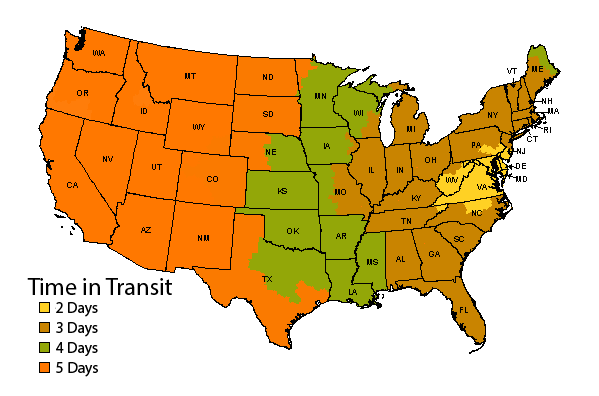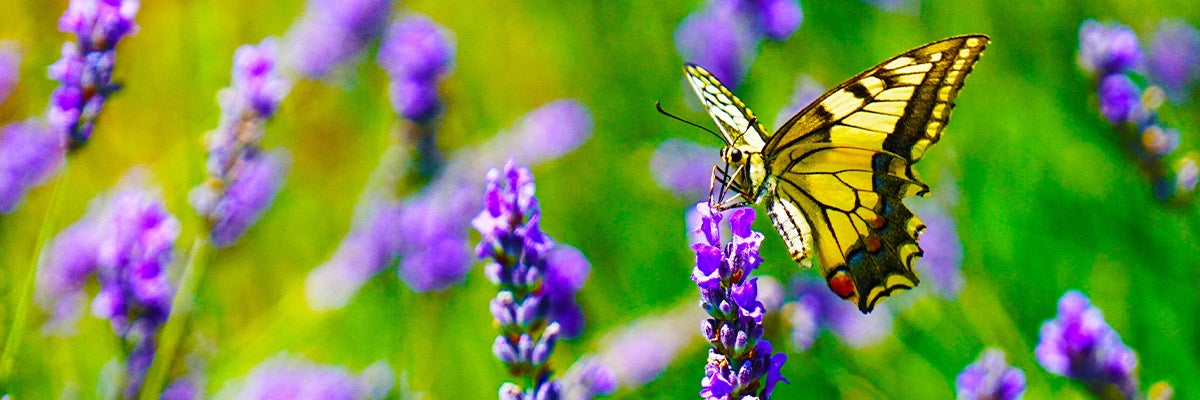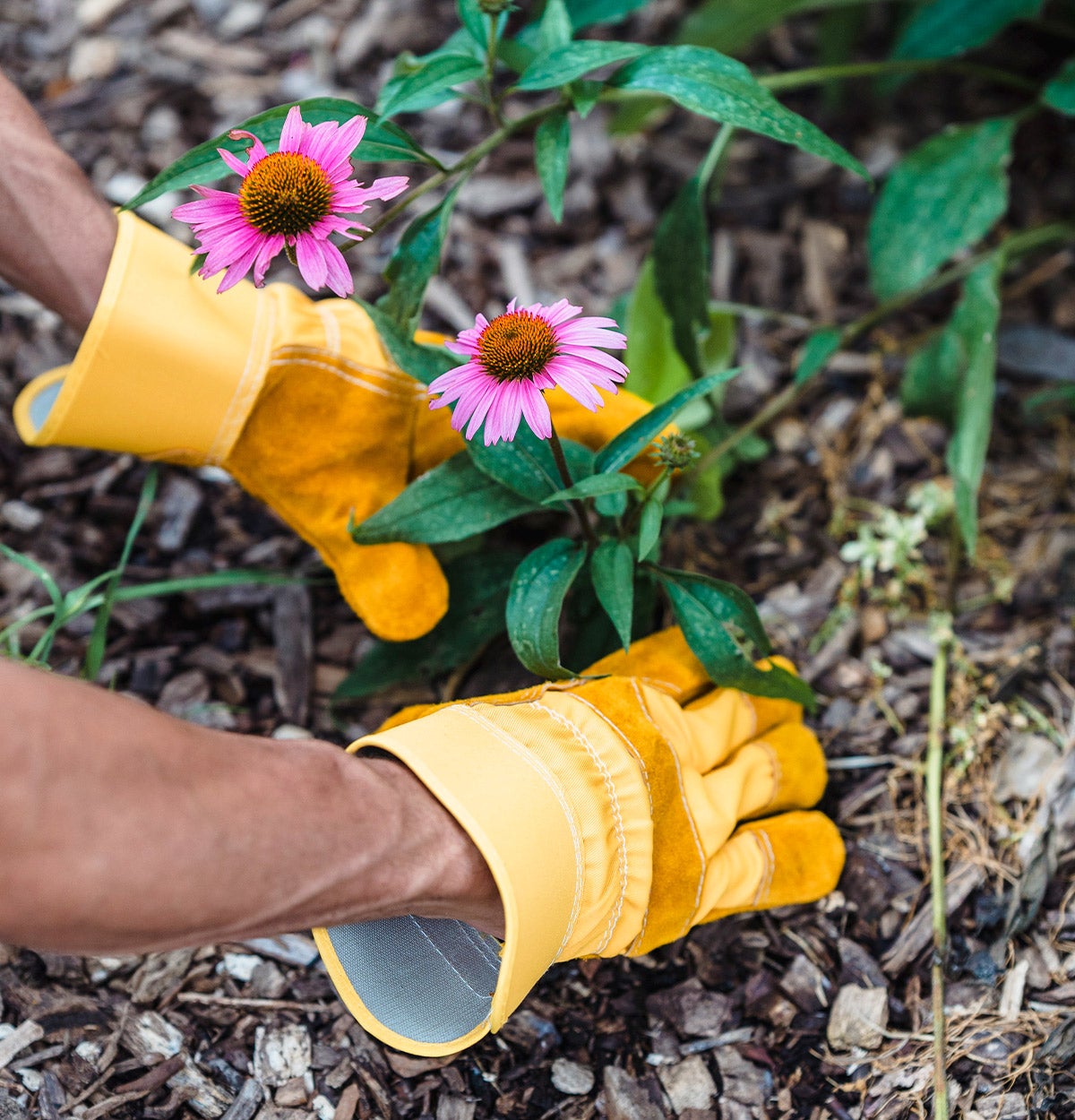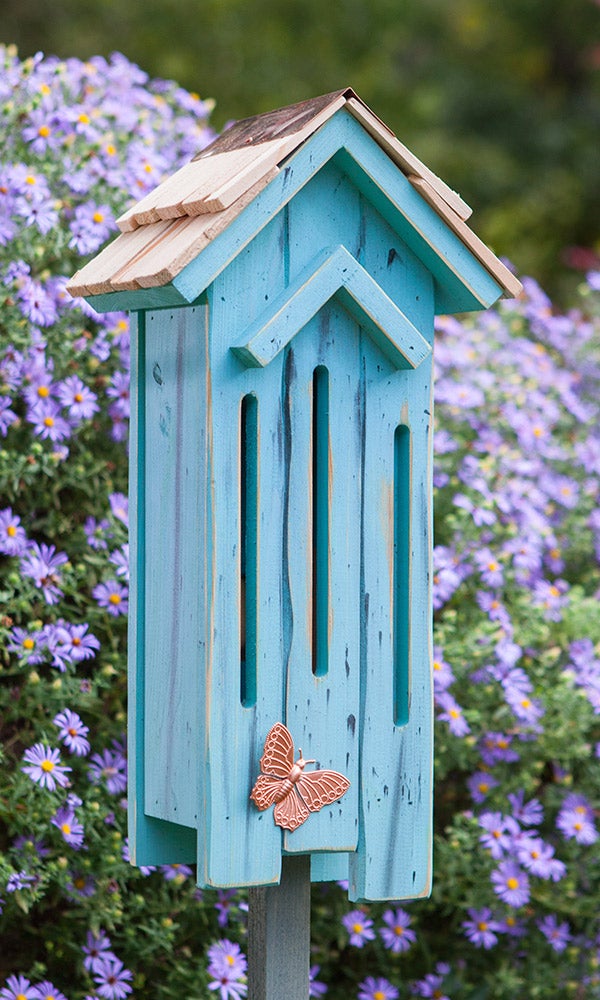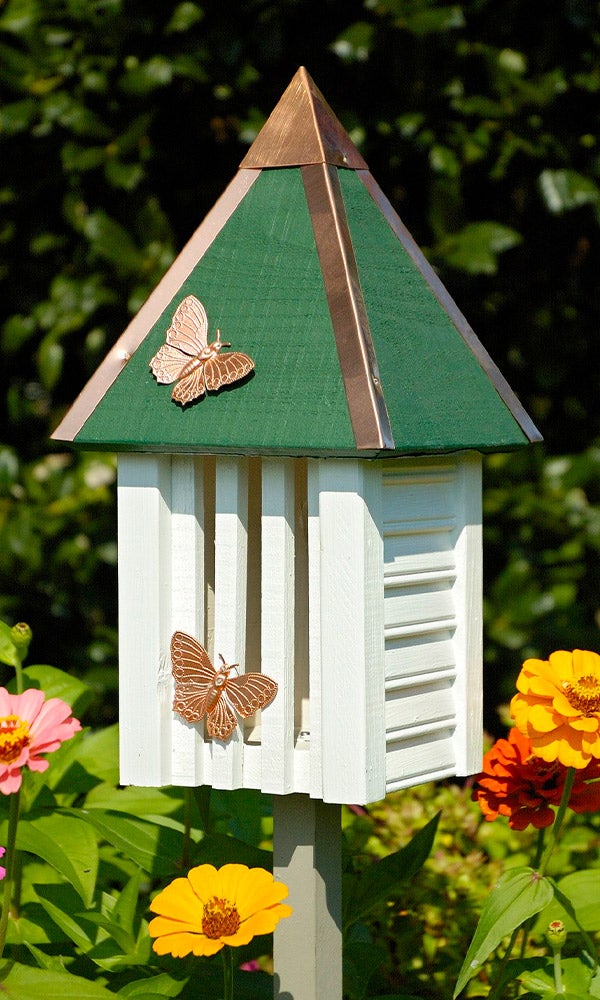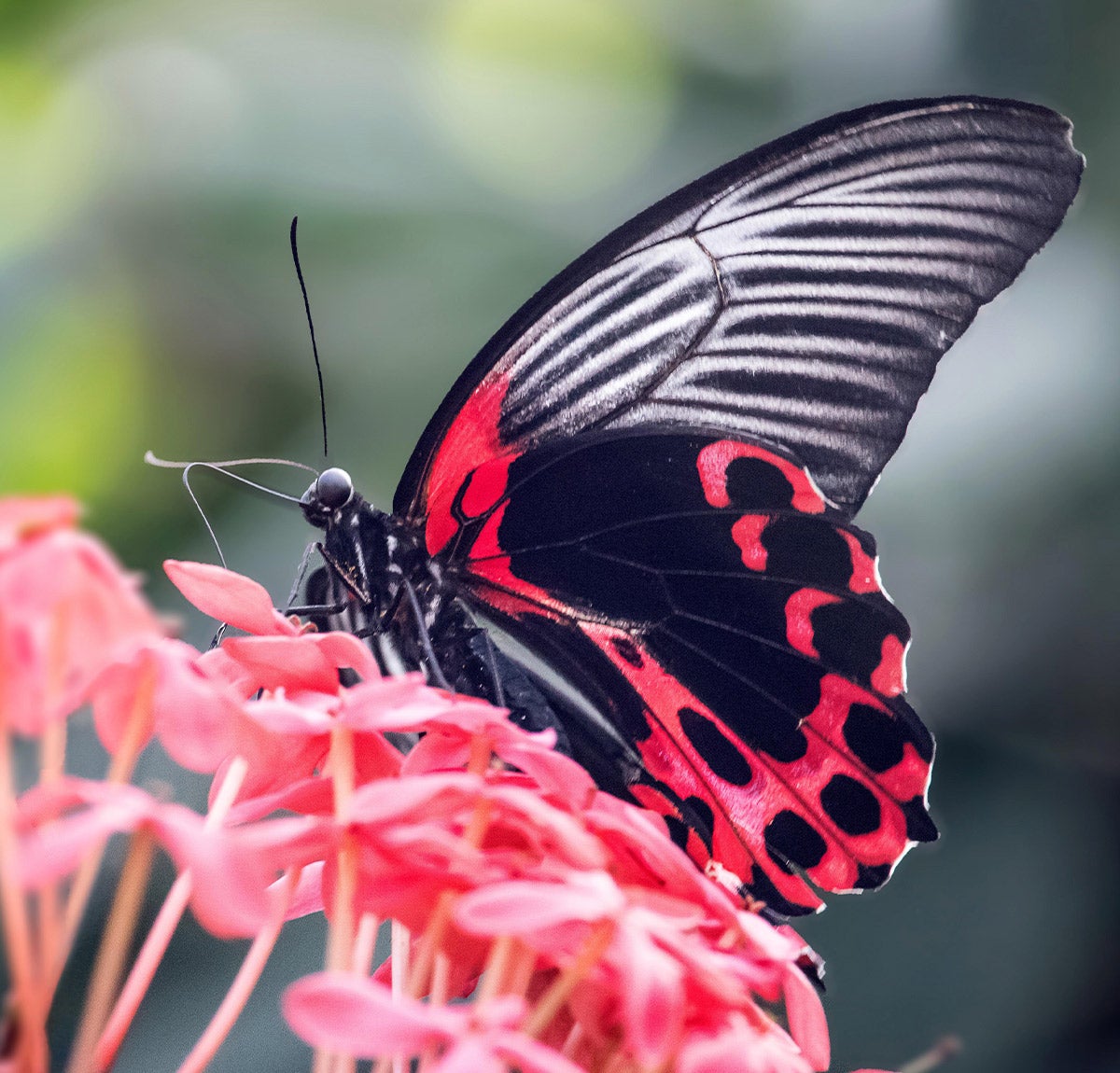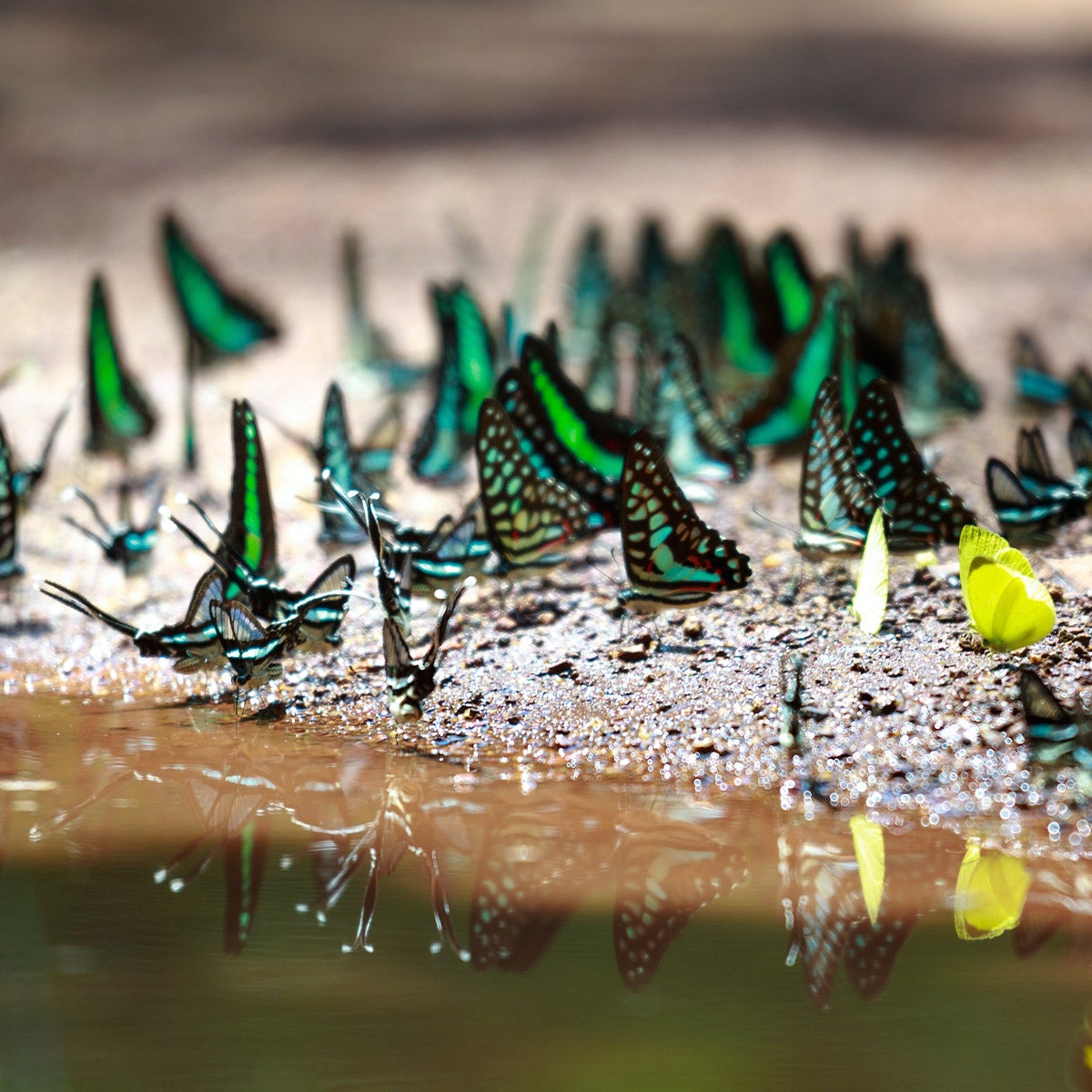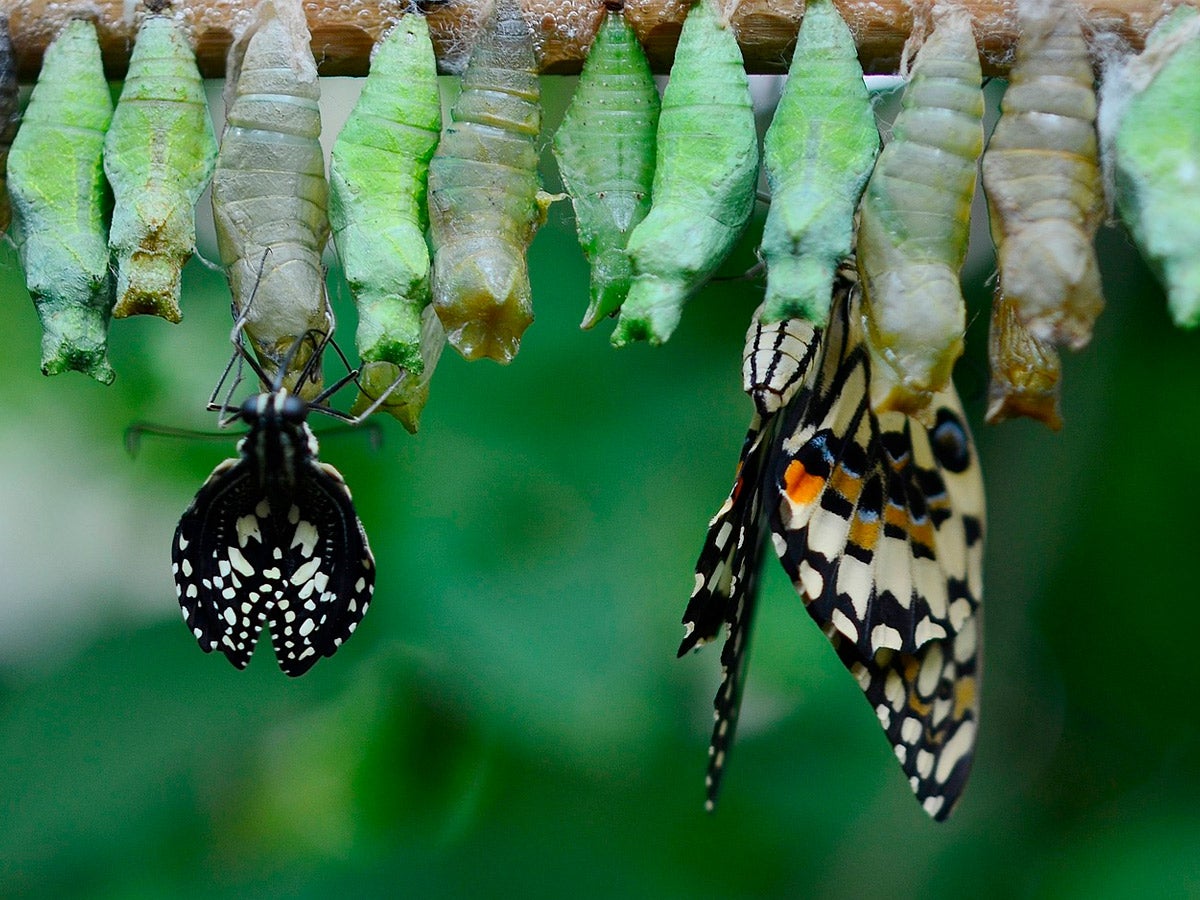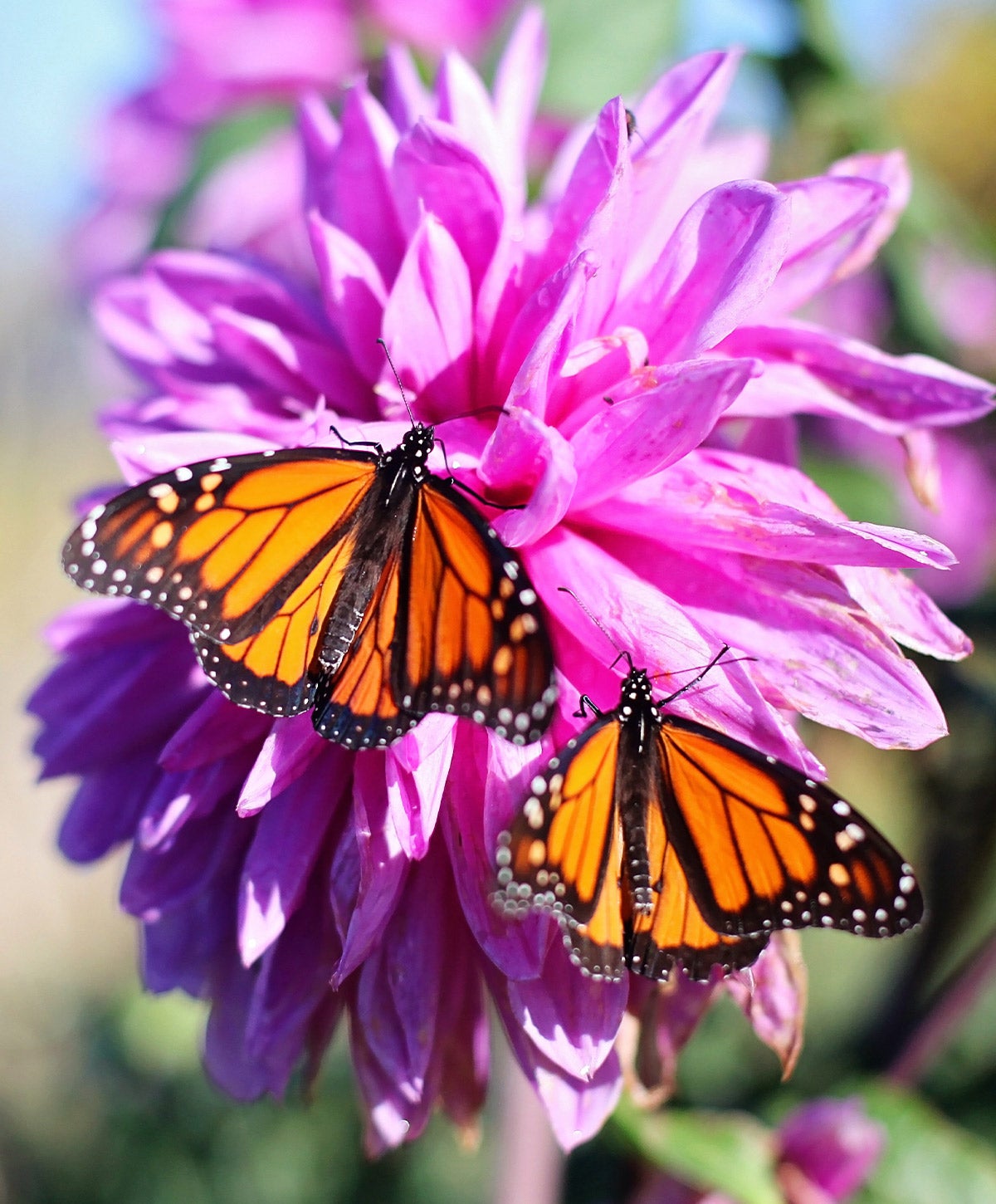Butterfly Food
Butterflies are active in spring, summer and fall, with their activity being low in the spring and steadily peaking in the fall months. When choosing your flowers, it’s best to select nectar plants that will bloom in accordance with the butterfly activity. Here are some options for the seasons:
- In spring, Viburnum and Golden Privet
- In summer, Coreopsis, Zinnia, and Shasta Daisy
- In fall, Rough Blazing Star and New England Aster
If your flowers aren’t in bloom, or you’d like to offer an alternative food source for your butterflies, you can put in a shallow dish overripe fruit, store-bought nectar, fruit juice, sugar water, or clear sports drinks.
As with all things, experiment and see what suits your garden best. Butterflies prefer a variety of options rather than a single choice.
